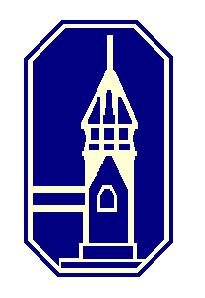Maths lessons at Ropsley
We want all our children to have a ‘can do’ attitude to Maths. We aim to equip every child with the tools they need to develop deep and lasting mathematical understanding. We follow a ‘Teaching for Mastery’ approach in school which means that we aim for all pupils to acquire a deep, long-term understanding of Maths. We want every child to ‘Master Maths’.

Image taken from mathsnoproblem.com)
Using manipulatives (CPA- Concrete/Pictorial/Abstract):
In order for children to develop a strong sense of number, children need to physically form numbers, partition them and see how the numbers fit together. We do this using manipulatives. Children begin each new objective with concrete resources. This is the known as the ‘concrete’ stage in Mathematics. These manipulatives could be dienes, place value counters, bead strings, unifix cubes or anything that will allow the children to investigate the maths practically. The type of manipulatives used will depend on the year group of your child.
Once the children are confident using the manipulatives, the learning moves into the ‘pictorial’ stage. In this stage, children ‘see’ the Maths - children are encouraged to make a connection between the physical objects they have used and the pictures or diagrams that represent the objects.
Drawing or seeing a representation can make it easier and more accessible for children to secure their understanding before moving into the abstract stage.
The third stage is the 'Abstract'. Once children are secure with using the manipulatives and seeing them in the pictorial stage, they move onto the ‘symbolic’ stage of Mathematics. In this stage, Maths is represented by numerals and symbols.
It is easy to become confused! As adults, we have had a lot of practice developing and fine tuning our mathematical skills. It is easy to forget that numbers are still so new to primary age children. They need a lot of time and practise with building numbers and looking at all the different ways they can be pulled apart. We know what 80 looks like and how much £80 is worth, how long 80cm is, counting forwards and backwards from 80. For children, they are still learning this and so seeing a number represented in numerals is abstract and not so familiar.
Stem sentences:
A stem sentence describes the representation and is used throughout the three stages- Concrete, Pictorial and Abstract. It helps to support the child as they move through the stages. Children will develop the sentence with the teacher and then orally rehearse it throughout the lesson to build fluency.
For example –
When describing equal groups for multiplication and division.

“There are ___ equal groups with ___ in each group.”
This provides the structure of the Maths and the sentence can be taken away and replaced with the abstract symbols. Children can refer back to the stem sentence when unsure, to remind them of the structure of the maths calculation.
“There are 3 equal groups with 2 in each group.”
Becomes… 3 x 2
